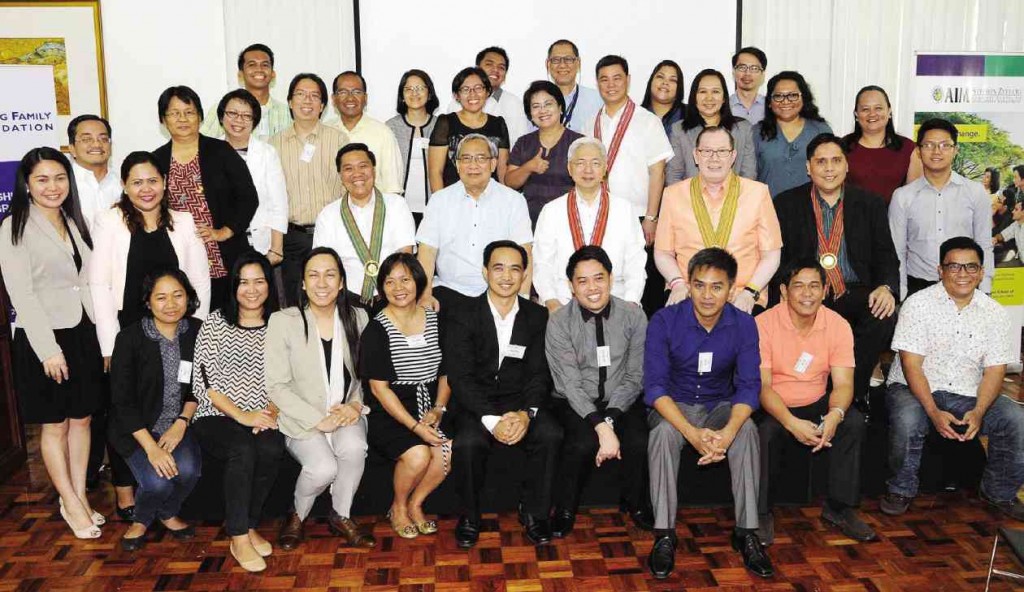Local program helps lower high rates of maternal deaths

TO FURTHER deepen appreciation and understanding of the framework, stakeholders of the Health Leadership and Governance Program held a three-day Academic Partners Colloquium last week at the Asian Institute of Management.
Maternal death is the death of a woman during pregnancy, during delivery or soon after childbirth (excluding accidental or incidental causes). It is regarded as a tragedy for the woman, her family and for society as a whole—a reason why it was included in the Millennium Development Goals (MDG).
In 1990, when the MDG was set, the country’s maternal mortality ratio (MMR) was 170 deaths per 100,000 live births. This figure was quite high when compared to Southeast Asian neighbor Thailand (42:100,000) but a little better than Indonesia’s (430:100,000) or the global average (380:100,000).
Twenty-three years later (figures taken from 2013 data), as global maternal deaths declined by 45 percent—to 210:100,000—the number of Filipino mothers who die from childbirth has remained almost the same (162:100,000). Interestingly, Thailand’s figure improved to 26:100:000 as well as Indonesia with 190:100,000 ratio.
Causes of maternal deaths are hemorrhage, sepsis (blood infection), obstructed labor, hypertensive disorders in pregnancy and complications of unsafe abortion. Most of these causes are preventable with proper diagnosis and intervention.
Effective strategies
While improving the policy of universal health coverage under the state-run Philippine Health Insurance (PhilHealth); increase in facility-based deliveries in poor regions; the establishment of birthing facilities called basic emergency obstetric and newborn-care facilities, and comprehensive emergency obstetrics and newborn-care facilities are currently being regarded as effective strategies, Zuellig Family Foundation (ZFF), in late 2008, began partnering with various rural municipalities in the Philippines in efforts to improve leadership and governance.
The initiative became known as Community Health Partnership Program (CHPP) wherein ZFF teamed up with mayors, municipal health officers (MHOs) and sociocivic leaders (collectively called the municipal health leaders). These leaders undergo training to deepen their understanding of health, to initiate health programs in their communities, strengthen health-related institutions and to gather their constituents’ support for health.
Among the initiative’s targets is to help attain the MDG of having an MMR of 52 deaths per 100,000 live births.
Highest incidence
Noting that the incidence of maternal deaths is highest in isolated barangays where pregnant women usually travel long distances to avail themselves of prenatal care in health centers as well as take the risk of delivering at home employing the services of the traditional hilot (those who perform traditional birth assistance at homes) instead of skilled birth attendants, ZFF crafted a two-year Health Leadership and Governance Program with municipal mayors and MHOs.
“The challenge of meeting the MMR target or the MDG, in general, necessitates systemic reforms that involve different stakeholders. We, your government leaders, have been bringing stakeholders together so we could work cooperatively toward common health goals. That is why we partnered with the Zuellig Family Foundation for the ‘Health Leadership and Governance Program,’” said Health Secretary Janet Garin in last week’s Academic Partners Colloquium of the DOH-ZFF Health Leadership and Governance Program.
Garin lauded the program’s academic institutions who train mayors and MHOs to become leaders who are knowledgeable about health, inclusive, transparent, accountable and responsive.
She said: “The DOH is also contemplating on having its own academy to strengthen health stakeholders’ capacities. As that is still in the planning stage, we are fortunate to have you. Though there are just 12 of you, we have already reached over 500 LGUs.”
12 partners
The program’s 12 academic partners are Ateneo de Davao University, Ateneo de Naga University, Ateneo de Zamboanga University, Benguet State University, Cebu Normal University, Davao Medical School Foundation Inc., Development Academy of the Philippines, Silliman University, University of the Philippines Manila College of Public Health, UP School of Health Sciences in Palo, Leyte, UP Visayas, and Xavier University.
Through experience sharing during the three-day exchange of ideas, the institutions learned from each other’s successes and challenges in training the mayors and MHOs.
DOH director Eric Tayag, who heads the Bureau of Local Health Development, said the partners must also ensure more leaders get into the program. “Statistics are not yet out to determine whether the recent MMR has improved nationally. However, there are already many success stories from individual rural municipalities based on what we have heard from the past three days of this event,” he said.
One notable report came from the town of Del Carmen in Surigao del Norte wherein through consultations with local health staff and employment of additional people, dialogue with community leaders, establishment of more facilities, and getting public utility drivers involved, the town was able to maintain a zero-maternal deaths since 2011.
Most town mayors involved in the program also reported establishing new facilities, seeking the cooperation of local parishes (setting up seminar on responsible parenthood and family planning) as well as the inclusion of their constituents in the government’s PhilHealth program.
Other towns involved in the program decided to formally employ former hilot, making them assistants to barangay health workers and midwifes (instead of being tagged as informal).














